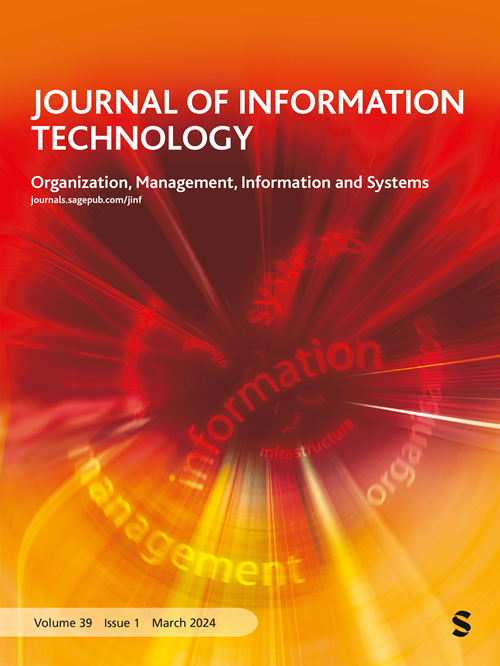通过数字跟踪数据生成有影响力的定位解释
IF 5.4
3区 管理学
Q1 COMPUTER SCIENCE, INFORMATION SYSTEMS
引用次数: 0
摘要
渐渐地,信息系统(IS)研究人员利用数字轨迹数据来捕捉当今数字化世界的新兴动态。数字跟踪数据使研究人员能够对社会技术现象的特征和动态产生高度具体的见解。我们建议信息系统研究人员如何使用数字跟踪数据来开发情境解释,即捕捉现实世界问题的特殊特征的解释,以便为这些问题产生有影响力的解决方案。我们概述了基于数字轨迹数据构建定位解释的五个关键原则。我们就信息系统领域如何调整其研究和出版实践以接受情境解释的发展和传播提出了几点建议。本文章由计算机程序翻译,如有差异,请以英文原文为准。
Generating Impactful Situated Explanations through Digital Trace Data
Progressively, information systems (IS) researchers draw on digital trace data to capture the emergent dynamics of today’s digitalized world. Digital trace data enable researchers to generate highly context-specific insights into the features and dynamics of socio-technical phenomena. We suggest how IS researchers can use digital trace data to develop situated explanations, that is, explanations that capture the idiosyncratic features of real-world problems in order to generate impactful solutions to these problems. We outline five key principles to build situated explanations based on digital trace data. We make several suggestions on how the information system field can adjust its research and publication practices to embrace the development and dissemination of situated explanations.
求助全文
通过发布文献求助,成功后即可免费获取论文全文。
去求助
来源期刊

Journal of Information Technology
工程技术-计算机:信息系统
CiteScore
10.00
自引率
1.80%
发文量
19
审稿时长
>12 weeks
期刊介绍:
The aim of the Journal of Information Technology (JIT) is to provide academically robust papers, research, critical reviews and opinions on the organisational, social and management issues associated with significant information-based technologies. It is designed to be read by academics, scholars, advanced students, reflective practitioners, and those seeking an update on current experience and future prospects in relation to contemporary information and communications technology themes.
JIT focuses on new research addressing technology and the management of IT, including strategy, change, infrastructure, human resources, sourcing, system development and implementation, communications, technology developments, technology futures, national policies and standards. It also publishes articles that advance our understanding and application of research approaches and methods.
 求助内容:
求助内容: 应助结果提醒方式:
应助结果提醒方式:


